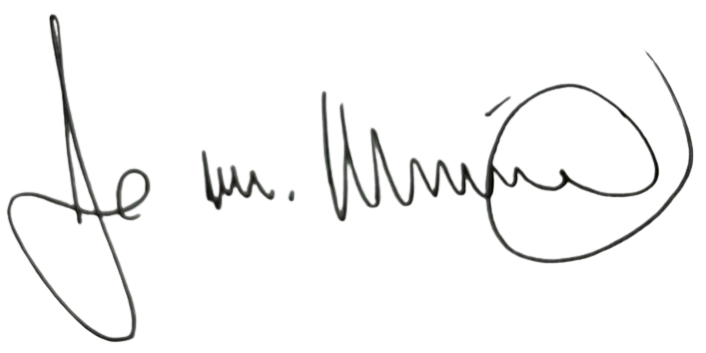written by “Jake Mannino”
In a world filled with constant distractions, where emails, notifications, and meetings seem to pull leaders in every direction, one skill remains crucial for long-term success: focus. Yet, many leaders struggle to carve out uninterrupted time to engage in the kind of deep work that fosters creativity, drives strategy, and moves their organization forward. Enter the Deep Work Sprint—a method designed to help leaders regain control of their attention, maximize productivity, and accelerate meaningful progress on high-impact tasks.
Deep work, a term popularized by Cal Newport, refers to focused, uninterrupted periods of concentration that lead to high levels of productivity and innovative problem-solving. Leaders who cultivate deep work habits are more likely to make smarter decisions, improve team outcomes, and experience less burnout. Let’s dive into how adopting Deep Work Sprints can unlock unparalleled productivity and focus for leaders at any level.
Why Deep Work is the Key to Leadership Success
In the age of instant gratification and information overload, the ability to focus deeply on complex tasks is becoming increasingly rare, yet increasingly valuable. Leaders are often pulled into reactive work—emails, meetings, and last-minute crises—that keep them from making real, strategic progress.
Deep work, on the other hand, allows leaders to:
- Achieve breakthrough thinking: Tackling complex problems requires uninterrupted focus. Deep work fosters creativity and innovation by allowing leaders to dive into tasks that require careful thought.
- Complete high-value tasks efficiently: Deep work isn’t about working more hours—it’s about making the most of your time by working smarter and with intent. By focusing exclusively on high-value tasks, leaders can drive greater results in less time.
- Reduce mental fatigue: Juggling multiple distractions throughout the day can lead to decision fatigue, reducing a leader’s ability to make sound judgments. Deep work provides mental clarity, increasing your energy and decision-making capacity.
What is a Deep Work Sprint?
A Deep Work Sprint is a focused, intensive period where you block out all distractions and dedicate your time exclusively to one high-priority task. Think of it as a marathon for your mind, but condensed into manageable, hyper-focused sessions.
Unlike traditional time management techniques, which may still allow for interruptions, a Deep Work Sprint is non-negotiable. For the duration of the sprint, you are fully immersed in your work, cutting off all avenues for distraction.
This focused sprint typically lasts 90 minutes to 3 hours, a sweet spot that allows for significant progress without leading to burnout. By implementing multiple Deep Work Sprints throughout your week, you can dramatically increase the quality and quantity of your output.
The Deep Work Sprint Formula for Leaders
Mastering the Deep Work Sprint requires careful planning and discipline. Here’s a step-by-step guide to help you implement it into your routine:
1. Identify Your High-Impact Tasks
Not all tasks are created equal. The first step in effective Deep Work Sprints is identifying which tasks truly deserve your undivided attention. These tasks are typically strategic, creative, or complex and contribute directly to your long-term goals.
Examples of high-impact tasks for leaders might include:
- Long-term strategic planning
- Crafting important proposals or presentations
- Analyzing critical data for decision-making
- Developing new business initiatives
- Writing key documents such as company policies or a CEO letter
2. Schedule Your Sprints in Advance
Deep work doesn’t happen by accident; it requires intentional scheduling. Block off time for your Deep Work Sprints in your calendar, just as you would a critical meeting or appointment. Morning hours tend to be most effective for deep work, as your mind is typically sharper and less bogged down by the day’s distractions.
Guard this time fiercely. Treat it as a non-negotiable commitment to yourself and your organization.
3. Create a Distraction-Free Zone
Your environment plays a massive role in your ability to focus. To prepare for a successful Deep Work Sprint, create a workspace that is conducive to concentration. Here’s how:
- Turn off notifications: Silence your phone, close your email, and disable any distracting notifications.
- Clear your workspace: A cluttered environment can lead to a cluttered mind. Ensure that your desk is organized and free of anything unrelated to the task at hand.
- Let others know: If you work in a shared space or manage a team, let them know when you’ll be in a Deep Work Sprint. Encourage them to respect this time by holding off on non-urgent requests.
4. Use the Pomodoro Technique (Optional)
For leaders who find it difficult to maintain focus for extended periods, the Pomodoro technique can help break your sprint into smaller intervals. Work for 25 minutes of intense focus, followed by a 5-minute break, then repeat. After four cycles, take a longer 15-30 minute break. This method allows your brain to recover while still maintaining productivity.
5. Track Your Progress
After each Deep Work Sprint, take a few minutes to assess your progress. Did you achieve what you set out to do? If not, why? Reflecting on your sprints allows you to continuously improve your focus and identify areas where distractions may still be creeping in.
Why Leaders Need Deep Work Sprints Now More Than Ever
As leadership roles evolve, leaders are expected to do more than manage—they must inspire innovation, guide vision, and solve complex, multi-dimensional problems. These tasks cannot be effectively handled with fragmented attention.
With the rise of remote work, endless meetings, and digital distractions, the ability to maintain deep focus is not only a competitive edge—it is essential for long-term success. Leaders who master the art of deep work are more likely to:
- Deliver innovative solutions faster
- Make better decisions due to uninterrupted critical thinking time
- Avoid burnout by creating intentional breaks for deep, focused work
- Model high-performance behaviors for their teams
The Benefits of Deep Work Sprints for Teams
While Deep Work Sprints are a powerful tool for individual leaders, they can also be integrated into team culture to drive collective productivity. By encouraging your team to adopt regular deep work sessions, you can foster a culture of focus, where high-priority tasks are tackled head-on without the usual interruptions of a typical workday.
Encourage team members to block out time for deep work, particularly when working on collaborative projects or important deliverables. Not only will this increase efficiency, but it will also reduce stress and the pressure of looming deadlines.
How to Get Started with Deep Work Sprints
To get started with Deep Work Sprints, follow these action steps:
- Audit your current workday: Take a hard look at how your day is currently structured. How much time are you spending on shallow tasks versus deep, focused work?
- Designate Sprint Times: Pick one or two times in the upcoming week to dedicate to Deep Work Sprints. Protect this time and communicate your plan to your team or assistants, so they know to leave you undisturbed.
- Evaluate and Adjust: After your first sprints, review your results. Did you complete more work in less time? Were you able to focus more deeply? Adjust your environment or schedule as needed to improve future sessions.
The Future of Leadership is Deep Work
As the pace of work continues to accelerate, leaders who harness the power of focus will stand out from the rest. Deep Work Sprints offer a practical, high-impact method for cutting through the noise and unlocking productivity at an entirely new level. By making time for deep, uninterrupted thinking, you’ll make smarter decisions, lead with clarity, and elevate both your performance and that of your team.
Don’t just react to the demands of the day—take control of your focus and lead your organization into a future of high-impact, purpose-driven success.
Happy Selling - Jake Mannino

